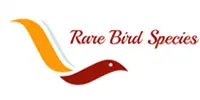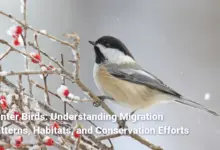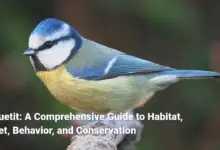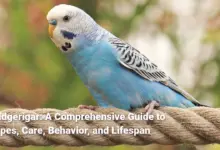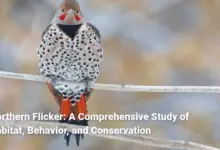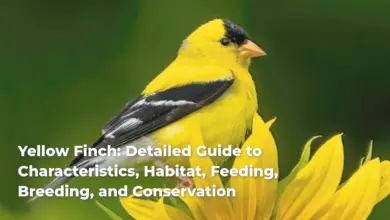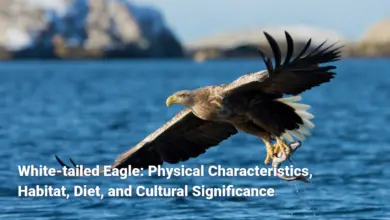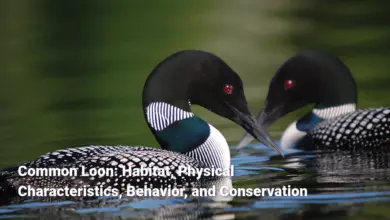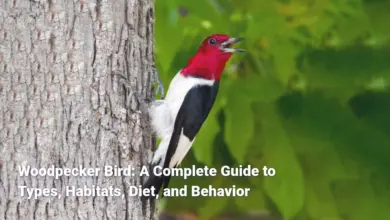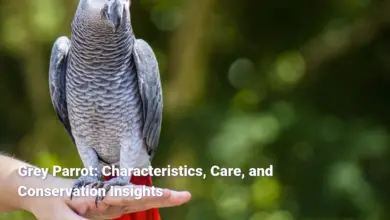Siskin: Comprehensive Guide to Identification, Habitat, Feeding, Breeding, and Social Behavior
An In-Depth Look at Siskins: Identification, Habitat, Feeding, Breeding, Social Behavior, and Fun Facts
Siskin: Comprehensive Guide to Understanding the Bird
Siskins, uniquely charming members of the finch family, have captured the hearts of bird lovers around the world with their acrobatic feeding, vibrant plumage, and melodious calls. Primarily found in the Northern Hemisphere, these small songbirds belong to the Spinus genus, which includes notable species such as the Pine Siskin (Spinus pinus) and the Eurasian Siskin (Spinus spinus). Each species has particular traits that reflect their adaptability to various habitats, making them a fascinating subject for ornithology enthusiasts and casual observers alike.
Understanding siskins involves delving into their identification features, habitat preferences, feeding behaviors, and social structures. This guide will provide a comprehensive overview that not only showcases the beauty and uniqueness of these birds but also highlights the ecological roles they play in their respective environments. By exploring their breeding behavior, migration patterns, and social interactions, readers will gain a deeper appreciation for siskins and their significance in the avian world.
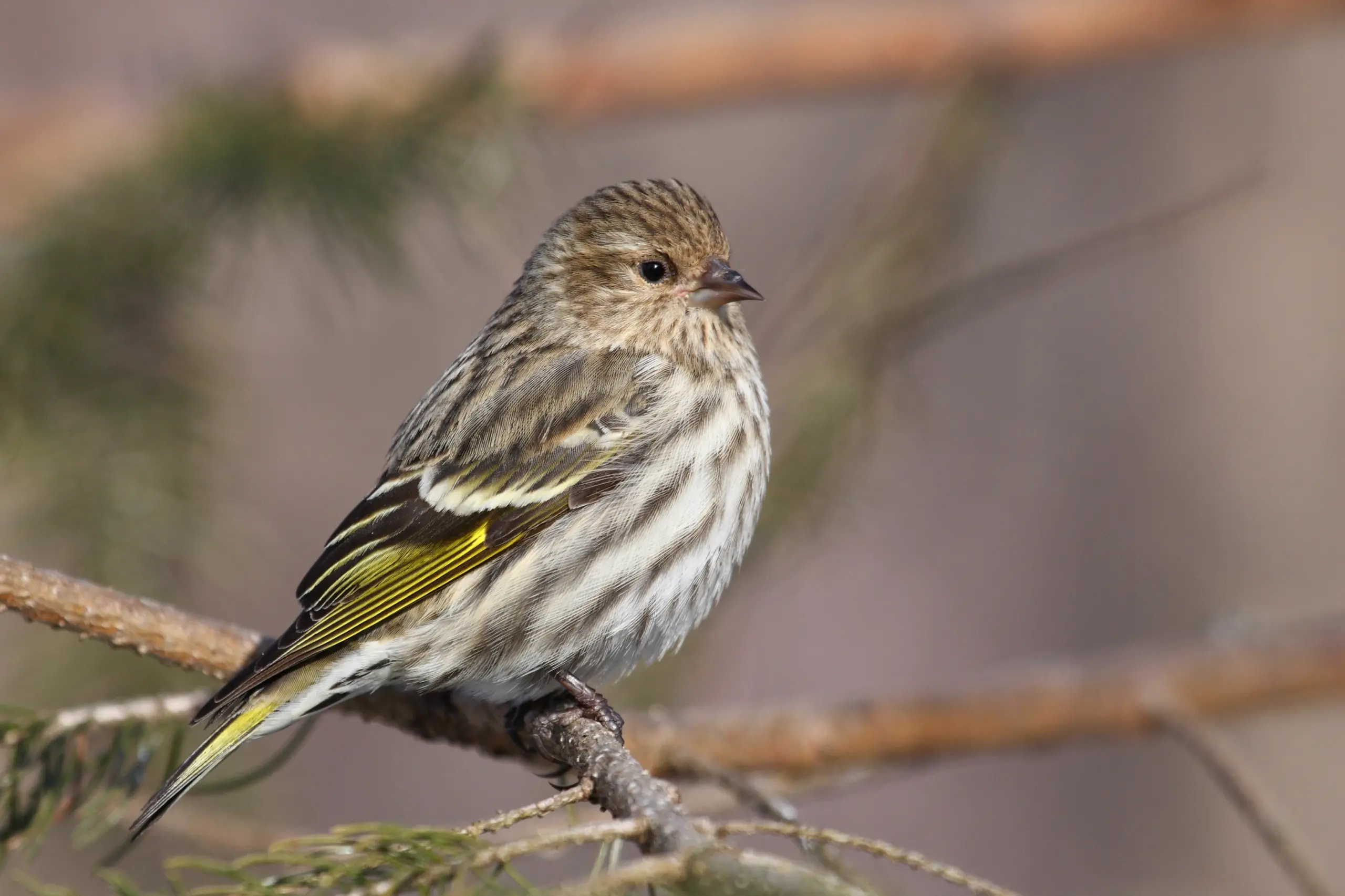
As we embark on this journey through the world of siskins, we’ll explore their physical characteristics, behavioral traits, and cultural symbolism. Each section will unfold like a tapestry, outlining the intricacies of a bird that brings joy and life into our natural surroundings.
Identification of Siskins
Identifying siskins can be likened to spotting a needle in a haystack; you must know exactly what to look for to ensure you’re drawn to the right target. These small finches, often seen flitting about in flocks, have distinct features that set them apart from similar species. Siskins are small birds, typically measuring between 11 to 14 centimeters (about 4.3 to 5.5 inches) in length. Their vibrant colors and patterns catch the eye, especially when they display brilliant flashes of yellow during flight.
The Pine Siskin’s bill is sharp and slim, ideal for extracting seeds with precision. Their plumage primarily consists of a brown streaked body complemented by subtle yellow edges on their wings and tails. Males sport brighter yellow-green hues on their upper bodies, whereas females exhibit a more subdued brown-yellow display. Both genders share characteristics such as pointed wingtips, a notched tail, and distinctive vocalizations a harsh “watch-winding” call that serves as their social communication.
Here’s a quick reference table displaying some of the key identification features of siskins:
| Feature | Description |
|---|---|
| Size | 11-14 cm (4.3-5.5 inches) |
| Weight | 12-18 grams (0.4-0.6 ounces) |
| Bill | Slim, sharply pointed |
| Males | Bright yellow-green upper parts |
| Females | Streaky brown-yellow plumage |
| Wing Bars | Two prominent yellow wing bars |
| Tail Shape | Short, notched |
| Vocalization | Distinctive harsh calls |
Observing siskins in their natural habitat, whether in forests or at backyard feeders, becomes a delight when one knows exactly what signs to watch for. Their unique feeding behaviors, social interactions, and distinct calls serve as key indicators in identifying these enchanting birds.
Physical Characteristics
The physical characteristics of siskins make them particularly enchanting. At first glance, one might notice their petite stature and lively movements that allude to a robust spirit. Measuring between 11 and 14 centimeters, these birds are relatively small compared to their larger finch cousins. Their lightweight frame typically weighing between 12 and 18 grams allows for swift and agile flight, reminiscent of acrobats performing aerial feats. It’s not uncommon to observe them hanging upside down while foraging, a behavior that illustrates their remarkable adaptability in accessing hard-to-reach seeds.
The bill of a siskin is another defining trait; it is long and pointed, ideal for plucking seeds from cones and pods. This design is akin to having a pair of tweezers at their disposal, enabling them to extract nourishment from various sources with precision. The color palette of a siskin is a radiant blend of browns, yellows, and greens. Males are vibrant, showcasing bright yellow-green plumage adorned with black crowns and striking wing patterns. In contrast, females present a more reserved appearance, cloaked in streaky brown with subtle yellow accents like an artist whose palette comprises softer hues to blend in with the background.
| Physical Feature | Male Siskin | Female Siskin |
|---|---|---|
| Plumage Color | Bright yellow-green | Streaky brown-yellow |
| Wing Bars | Prominent yellow bars | Less distinct yellow markings |
| Head Color | Black crown | Similar but less vivid |
| Bill | Slightly larger | Smaller and more slender |
Despite their differences, both sexes share essential traits that aid in identification: short, pointed tails, sleek body shapes, and unique vocalizations. The Pine Siskin’s distinctive call, often described as a cheerful jumble of sounds, showcases its vocal prowess allowing it to communicate effectively within flocks. By observing their physical traits, enthusiasts can enhance their birdwatching experiences, ensuring that encounters with these delightful finches are both memorable and educational.
Differences Between Male and Female Siskins
Understanding the differences between male and female siskins is akin to unfurling the layers of a captivating story one rich in color, character, and nuance. When male siskins are compared to their female counterparts, striking contrasts emerge in their coloration and ornamentation, playing a crucial role in their mating behavior and social dynamics.
Male siskins are the life of the party, donned in bright hues of yellow and green that draw the eye, much like sunflowers standing tall in a field. Their vibrant plumage, accentuated by a distinct black crown and bib, serves as a beacon during courtship rituals, attracting potential mates and displaying their health. The pronounced yellow streaks on their wings become even more prominent during flight, ensuring they are the stars of the show in any garden or woodland where they reside.
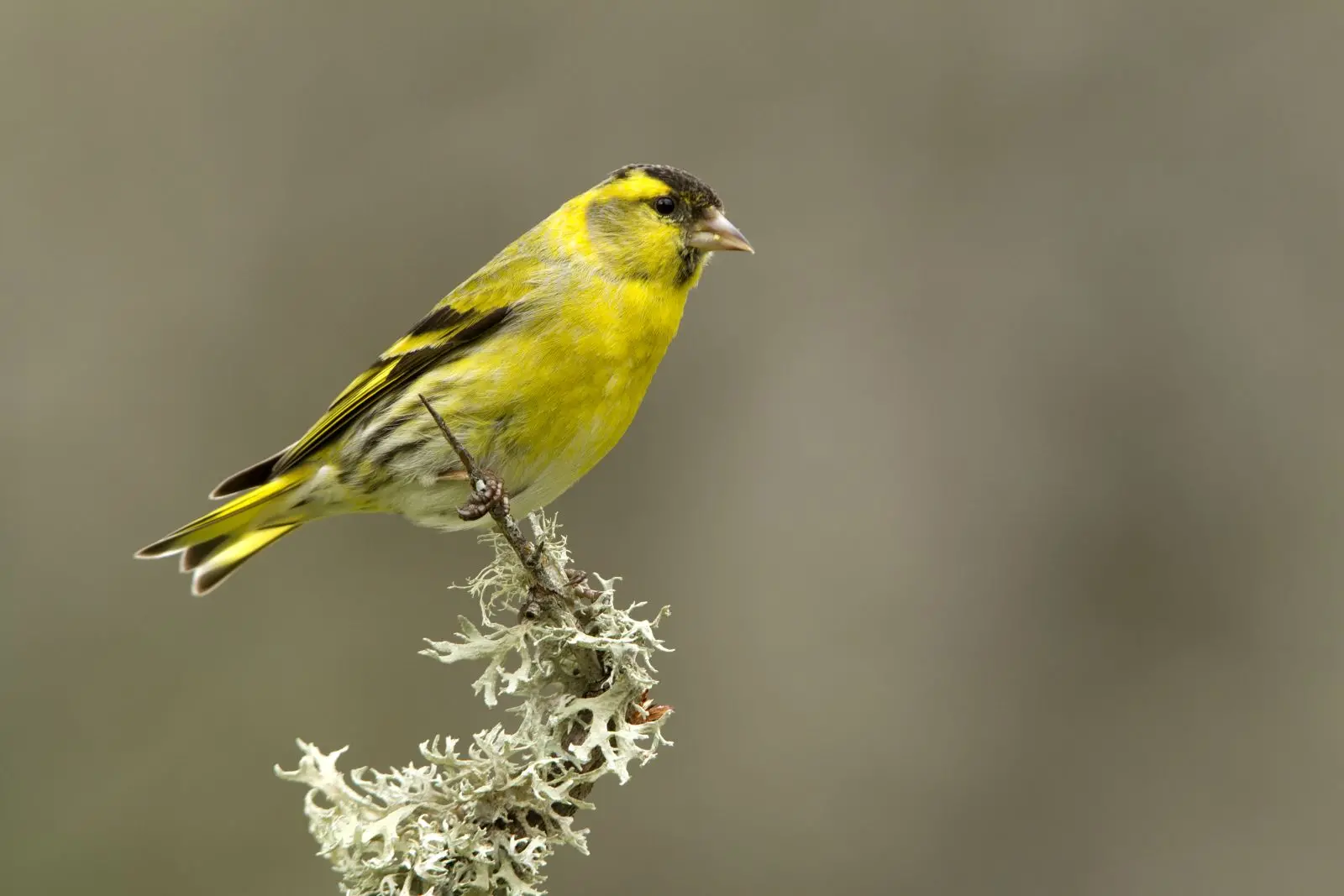
In contrast, female siskins adopt a more understated role. Clad in a tapestry of browns and subtle yellows, they blend effortlessly with their surroundings akin to shadows that flit between sunlit patches in a forest glade. This muted coloration not only provides camouflage while nesting but also diminishes visibility to potential predators. Although less flashy than males, the females are equally endowed with necessary adaptations, including a slender bill designed for seed extraction and similar behaviors that enhance their survival.
| Characteristic | Male Siskin | Female Siskin |
|---|---|---|
| Coloration | Bright yellow-green and black crown | Streaky brown-yellow |
| Size | Slightly larger | Smaller and slimmer |
| Wing Patterns | Prominent yellow streaks | Less pronounced markings |
| Behavior | More vocal and flamboyant | More reserved but equally active |
Despite the visual differences, both genders share key features that allow birdwatchers to identify them easily. Both males and females possess the signature forked tail, slim bills, and acrobatic feeding behavior that contribute to their charm. These differences contribute not only to the dynamics of siskin society but also enhance the overall experience of observing these beautiful, social birds.
Identifying Features and Coloration
Spotting siskins in the wild is like uncovering a gem amidst pebbles each glimmering facet revealing more of its allure. Their identification hinges on a variety of distinctive features and coloration that serve not only aesthetic purposes but also functional roles in their survival.
Starting with plumage, the male Pine Siskin dazzles with his vibrant yellow and green feathers. The brilliance of his coloration can be compared to that of sunshine breaking through a cloud on a cool spring day; it’s an invitation to observe closely. His striking black crown and accentuated yellow wing bars stand out against his predominantly brown body when in flight, creating a vivid display of colors that captivates any onlooker. These visual traits also convey vital information regarding health and genetic fitness, making them essential during courtship.
Conversely, the female siskin wears a more muted ensemble, characterized by streaks of brown and yellow. Her color palette may be reminiscent of autumn leaves subtle yet beautiful, providing effective camouflage as she nests and raises her young. This adaptability in coloration guarantees that she remains less conspicuous to predators while still retaining essential markings that align her with her species.
| Feature | Male Siskin | Female Siskin |
|---|---|---|
| Overall Color | Vivid yellow-green | Streaky brown with yellow accents |
| Wing Bars | Bright yellow | Less distinct |
| Head and Body | Bright black crown | More uniform brown |
| Flight Appearance | Flashy yellow underparts | Subtle and discreet |
In addition to their striking feathering, siskins have well-adapted physical features. Their slim, conical bills are perfectly designed for pinpointing and extracting seeds, emphasizing the importance of precision in their feeding habits. Their notched tails and pointed wing tips contribute to their agile flying patterns, allowing them to navigate swiftly through trees and shrubs, much like acrobats darting from one trapeze to another. Thus, their identification features create a tableau of colors, shapes, and actions that brings the marvel of nature to life, inviting us to participate in the wonder of birdwatching.
Habitat and Distribution
Habitat and distribution are key elements in understanding the ecology of siskins, acting as a stage for their vibrant performances in nature. Siskins demonstrate a remarkable ability to adapt to various environmental conditions, making them a versatile presence in both wild and urban areas.
The Pine Siskin primarily inhabits coniferous forests, where towering spruce and pine trees offer ideal nesting sites and abundant food sources. They thrive in mixed woodlands, often found in conjunction with birches and alders, which become significant seeds in their winter diet. The adaptability of siskins can also be seen in their willingness to venture into urban gardens and parks during colder months, where they flock to bird feeders especially those stocked with thistle or nyjer seeds.
Eurasian siskins exhibit similar flexible habitat preferences. They can be seen in coniferous forests, mixed woodlands, and even urban regions when natural food sources become scarce. Their resilience allows them to occupy weedy fields and scrubby thickets, where they continue to forage effectively. This adaptability speaks to their ability to thrive in fluctuating environments, enhancing their distribution throughout Europe and parts of Asia and North Africa.
To summarize the habitat preferences of siskins, consider the following:
| Habitat Type | Characteristics |
|---|---|
| Coniferous Forests | Preferred for nesting and feeding |
| Mixed Woodlands | Offers diverse food sources |
| Urban Areas | Frequented for artificial food sources |
| Weedy Fields | Important for winter foraging |
The distribution of siskins ranges from the chilly forests of Canada and the northern United States for Pine Siskins to broader regions across Europe, Asia, and northern Africa for Eurasian Siskins. Their seasonal movements and adaptability ensure that these charming little birds remain a familiar and delightful aspect of the landscapes they inhabit.
Preferred Habitats
Preferred habitats for siskins highlight their ecological adaptability, allowing them to thrive across varied ecological zones. These charming birds exhibit specific habitat preferences that denote their survival strategies, particularly in relation to food abundance and nesting opportunities.
- Coniferous Forests: Essential to the siskin’s lifestyle, these forests provide a treasure trove of seeds from coniferous trees such as spruce and pine. Siskins often nest high in tree branches, utilizing the dense foliage to shield their young from predators.
- Mixed Woodlands: The combination of coniferous and deciduous trees enhances the habitat’s diversity, ensuring a reliable seed supply throughout the year. Siskins are frequently seen foraging among birches and alders, profiting from the varied food sources available.
- Urban Gardens and Parks: Surprisingly sociable, siskins often venture into urban settings, frequenting gardens and parks, particularly during winter. They readily visit bird feeders stocked with seeds, showcasing their adaptability to human-influenced environments.
- Weedy Fields and Scrubby Thickets: During colder months, siskins may forage in agricultural fields and brushy areas where they can locate seeds and small invertebrates. These locations become vital as natural food resources diminish.
A summary of their preferred habitats is presented in the table below:
| Habitat Type | Description and Importance |
|---|---|
| Coniferous Forests | Ideal nesting sites and abundant seed sources |
| Mixed Woodlands | Diverse food options due to varied plant species |
| Urban Areas | Additional food supply through human-provided feeders |
| Weedy Fields | Important for winter foraging and food availability |
Siskins’ adaptability in selecting habitats not only contributes to their survival but also supports their role as seed dispersers and pollinators within their ecosystems. Their presence enriches both urban and rural landscapes, showcasing their resilience in navigating human-altered environments.
Geographic Range of Siskins
The geographic distribution of siskins is a testament to their adaptability and resilience, as they occupy a range of habitats across diverse climatic zones. Knowledge of their geographical range allows bird watchers and enthusiasts to appreciate the impressive journeys these birds undertake throughout the year.
The Eurasian Siskin boasts a broad distribution extending across Europe, northern Asia, and parts of North Africa. This species is commonly found throughout central and northern Europe, thriving in countries like the United Kingdom, Germany, and Scandinavia. Its breeding range reaches into eastern Asia, encompassing regions in Russia and parts of Mongolia. Interestingly, in winter, these siskins migrate southward, drawing down into the Mediterranean region and areas around the Black Sea, where remarkable congregations may be observed.
Conversely, the Pine Siskin has a more defined North American range. Found primarily in Canada and the northern United States, their distribution is heavily influenced by the availability of coniferous forests. Interestingly, Pine Siskins exhibit a behavior known as “irruptive migration,” where they may shift southward in search of food during winter. While some remain in their northern habitats year-round, others travel great distances in response to resource fluctuation, demonstrating their adaptability to varying environments.
| Geographic Range | Eurasian Siskin (Spinus spinus) | Pine Siskin (Spinus pinus) |
|---|---|---|
| Breeding Range | Central and northern Europe to eastern Asia | Northern Canada and USA |
| Wintering Areas | Mediterranean region and Black Sea | Variable; can migrate southward |
| Habitat Preferences | Coniferous and mixed woodlands, urban areas | Coniferous forests, urban feeders |
This expansive geographic range emphasizes not only the remarkable adaptability of siskins but also their critical roles in different ecosystems, making them vital components of both woodland and urban biodiversity. Understanding their distribution can aid conservation efforts, highlighting the importance of habitat preservation for these beautiful birds.
Seasonal Migration Patterns
Migration patterns of siskins reveal their dynamic relationship with food sources and environmental changes. These patterns, characterized by their irregularity, are shaped largely by the availability of seeds and overall climatic conditions.
The Eurasian Siskin displays an interesting migratory behavior. They don’t follow strict migratory routes but engage in irregular southward movements, typically occurring every few years. These migrations coincide with abundant seed production, particularly from Norway spruce and birch trees. Conversely, when food sources falter such as in years with low seed abundance these birds may engage in larger-scale migrations. The ability to adapt based on environmental cues showcases their resilience in navigating changing conditions.
Pine Siskins exhibit similar migratory habits, often described as “irruptive migration.” Their movements are dictated by food supply, with some individuals remaining in breeding ranges throughout the year while others embark on long-distance migrations. These migrations can see them traversing into southern U.S. regions during harsh winter months, particularly in search of seeds from sunflowers, thistles, and other flowering plants.
| Migration Type | Eurasian Siskin | Pine Siskin |
|---|---|---|
| Timing | Irregular, often coincides with seed production | Variable; some resident, others migratory |
| Key Triggers | Availability of Norway spruce seeds | Seed abundance and winter climate |
| Typical Patterns | Fluctuating southward movements | Irregular, can migrate significant distances |
| Regions Migrated To | Southern Europe and the Mediterranean | Southern USA and parts of Canada |
Seasonal migration is critical for siskins’ survival, enabling them to find food and sustain healthy populations even in the face of ecological challenges. This adaptability ensures that they continue to thrive as they traverse vast landscapes in search of nurturing habitats.
Feeding Behavior
The feeding behavior of siskins is a captivating aspect of their ecology, reflecting their adaptability in accessing various food sources. These small finches primarily feed on seeds a diet that showcases their granivorous habits, with a particular preference for seeds derived from coniferous trees.
Siskins are often observed foraging in flocks, a behavior that enhances their efficiency in locating food, much like a coordinated team working together to accomplish a common goal. In their quest for sustenance, they display remarkable acrobatic abilities, hanging upside down to reach seeds from branches, demonstrating an impressive mastery of their environment. This behavior allows them to exploit food sources that may be out of reach for larger birds.
During the winter months, siskins capitalize on backyard feeders, drawn to thistle seeds and sunflower hearts. Their social feeding dynamics help them navigate territories where food is plentiful, allowing them to thrive even when natural resources are scant.
| Feeding Behavior | Description and Characteristics |
|---|---|
| Primary Diet | Seeds, especially from conifers, birch, and alder |
| Foraging Strategies | Acrobatic feeding, often seen hanging upside down |
| Social Feeding | Frequently forage in flocks for efficiency |
| Seasonal Feeding Changes | Increased reliance on feeders during winter |
The feeding behavior of siskins not only illustrates their adaptability in changing environmental conditions but also showcases the interconnectedness of their social structures using group dynamics to enhance survival and access to resources.
Primary Diet of Siskins
The primary diet of siskins draws upon a diverse array of seeds, which forms the backbone of their nutrition. Like connoisseurs of nature, siskins exhibit selective feeding habits that highlight their adaptability and preferences.
- Seed Types: Siskins primarily feed on seeds from a variety of sources, including:
- Coniferous seeds, particularly from pine and spruce trees.
- Birch and alder seeds, which become critical food sources during winter.
- Thistle seeds, often a favorite at bird feeders.
- Breeding Season Adjustments: During the breeding season, their diet expands to include insects. This dietary shift is of paramount importance, providing the vital protein required to nourish their growing chicks. They may consume small invertebrates, primarily aphids and other soft-bodied insects, enhancing their nourishing capacity during critical rearing periods.
- Food Searching Behavior: Their feeding strategy allows for versatility; they extract seeds not only from cones but also glean seeds from various plants and surfaces, showcasing their intelligent foraging skills.
In summary, siskins possess a primary diet that is granivorous with occasional shifts during breeding seasons, illustrating their adaptability to food availability and nutritional needs.
| Food Source | Seasonality and Importance |
|---|---|
| Coniferous Seeds | Most important in winter |
| Birch Seeds | Critical in late summer and fall |
| Thistle Seeds | Seasonal preference during winter |
| Insects (during breeding) | Essential for chick nourishment |
Siskins’ feeding habits illustrate their dependence on a mix of natural environments and human-provided resources, allowing them to flourish in varying landscapes and seasons.
Feeding Habits and Techniques
The feeding habits and techniques of siskins exemplify their versatility and ingenuity in securing nourishment. These small yet astute birds demonstrate remarkable adaptability in accessing a range of food sources, effectively ensuring their survival even in challenging conditions.
- Feeding Strategies: Siskins are granivorous, relying heavily on seeds as their primary source of nutrition. Their sharp, conical bills are well-designed for extracting seeds from cones, pods, and surrounding vegetation. They utilize an acrobatic feeding technique, often hanging upside down to access difficult-to-reach seeds akin to a skilled performer executing complex tricks.
- Social Foraging: Flocking behavior plays a crucial role in their feeding dynamics. Foraging in groups enhances their overall efficiency, allowing them to locate food more effectively while providing safety in numbers. This social aspect proves particularly advantageous during winter months when food scarcity is common.
- Feeding Locations: Siskins are not picky about where they find food. Their diets can include seeds sourced from trees, shrubs, and even flowers. Furthermore, gardens and feeders serve as crucial spots for nourishment, particularly during the winter when natural food sources might be dwindling.
| Feeding Tactic | Description |
|---|---|
| Hanging Upside Down | Acrobatics that allow access to seeds |
| Group Foraging | Enhanced efficiency and safety |
| Diverse Locations | Flirts among trees, shrubs, and urban feeders |
The adaptive feeding habits exhibited by siskins do not only highlight their ingenious approach to survival but also reflect their ecological roles as seed dispersers within their habitats. Their foraging techniques, coupled with social behaviors, illustrate a seamless blending of individual and collective strategies.
Seasonal Diet Variations
Siskins exhibit seasonal diet variations that reflect their adaptability to changing environmental conditions. These periodic shifts not only ensure their survival but also highlight their ability to optimize available resources throughout the year.
- Winter Diet: During the colder months, siskins primarily rely on seeds from coniferous trees, birch, and alder. They exploit backyard feeders more frequently, particularly those stocked with thistle or nyjer seeds. This adaptation helps them maintain energy levels and weight in the face of low temperatures and diminishing natural food supplies.
- Breeding Season: Incrementally, siskins alter their diets during the breeding season (spring and summer) to include a higher proportion of insects. These protein-rich food sources are essential for feeding their chicks while ensuring the young develop healthily. The consumption of insects, often gleaned from foliage, is a strategic shift that illustrates their resourcefulness.
- Food Flexibility: The seasonal nature of siskins’ diets underscores their incredible flexibility being granivorous in harsh seasons and shifting to an insectivorous approach during breeding highlights their responsiveness to food availability. Their ability to exploit various food sources guarantees they remain resilient amidst fluctuating environmental conditions.
| Season | Primary Food Sources | Notable Changes |
|---|---|---|
| Winter | Coniferous seeds, thistle seeds | Increased feeder visits |
| Breeding Season | Insects (aphids, small invertebrates) | Shift towards protein-rich diet |
These seasonal diet variations exemplify the importance of flexibility in survival strategies and showcase the siskins’ ability to thrive in diverse habitats throughout the year.
Breeding and Reproduction
The breeding and reproductive behaviors of siskins illuminate their unique adaptations to environmental conditions and resource availability. The intricate dance of love and nesting showcases their ability to navigate the challenges of raising young while ensuring species continuity.
- Breeding Season Timing: Siskins typically commence their breeding activities in mid-March, with environmental cues and food availability influencing this timing. Breeding can extend from early spring through late summer, highlighting their adaptable reproductive strategies.
- Nesting Preferences: Siskins prefer to nest high in coniferous trees, where horizontal branches provide ample shelter. The location offers a layer of protection from potential predators while securing proximity to abundant food resources. The nests are usually constructed near the tops of trees, providing an optimal vantage point.
- Nesting Material and Structure: The nests are crafted using various materials, including twigs, grasses, ferns, and soft down. The female plays a primary role in building the nest, taking about a week to complete it. The structure, typically cup-shaped, is designed for comfort and security a safe haven for the eggs and chick.
- Egg Laying and Incubation: Females lay 2 to 6 eggs, glossy and smooth with light blue coloration dotted with speckles. The incubation period lasts around 11 to 14 days. During this period, the female remains primarily responsible for incubation while the male provides food and protection.
| Breeding Aspect | Description |
|---|---|
| Seasonality | Mid-March to late summer |
| Nesting Site | Coniferous trees, high branches |
| Nest Materials | Twigs, moss, soft down |
| Egg Characteristics | 2 to 6 eggs, pale blue with speckles |
Siskins’ breeding and reproductive strategies reflect their resilience and the ability to adapt to environmental conditions, ensuring the continuity of their species. They work collaboratively to raise their young, making them an enchanting subject of study for those interested in avian reproduction.
Nesting Behavior
The nesting behaviors of siskins offer a fascinating glimpse into their reproductive strategies and adaptability, showcasing how these tiny birds create safe environments for rearing their young. The intricacies of their nesting practices paint a vivid picture of their ecological needs and social dynamics.
- Nest Construction: Siskin nests are small, cup-shaped structures typically found high in trees, particularly coniferous ones. The nests are constructed primarily by females, using a variety of materials such as twigs, moss, bark strips, and even feathers. This careful selection ensures warmth and safety for the delicate eggs and chicks.
- Nesting Locations: The location of the nests provides essential protection from predation. Siskins often select branches that are well-hidden amidst the foliage, offering camouflaged concealment. The height of these nests also serves to deter ground predators, ensuring the safety of the young.
- Nest Features: The structure is compact, allowing for minimal exposure while providing sufficient room for the eggs and chicks. The lining of soft material, such as down or feathers, helps insulate the nest, creating a cozy environment conducive to hatching and rearing.
- Role of Males: Males play a supportive role during the nesting period, often gathering food for the female while she incubates the eggs. This cooperation reflects their social dynamics, with males displaying behaviors that reinforce partnership and resource sharing a vital element for successful breeding.
| Nesting Aspect | Description |
|---|---|
| Nest Construction | Small, cup-shaped nests |
| Materials Used | Twigs, moss, feathers |
| Nesting Height | High in coniferous trees |
| Male’s Role | Provides food and support |
Through their nesting behaviors, siskins exhibit a blend of resourcefulness and cooperation, ensuring the development of a new generation amidst varying environmental challenges. Their practices underscore their incredible adaptability and the remarkable strategies employed in avian parenting.
Mating Rituals
Mating rituals of siskins unveil a rich tapestry of behaviors that underscore their intricate social structures and reproductive strategies. Through visual displays and elaborate courtship, these small birds engage in a dance of attraction that strengthens pair bonding and ensures species continuity.
- Courtship Displays: Mating behaviors often commence in January and February when males engage in dazzling aerial displays to attract females. Their performances may involve fluttering flights where males circle their prospective mates, showcasing their vibrant plumage that claims attention. This display is further complemented by their melodious calls, which serve as vocal invitations to potential partners.
- Mate Feeding Behavior: An essential aspect of their courtship involves mate feeding, where males present food to females a sign of commitment and a demonstration of their ability to gather resources. This behavior not only strengthens the bond between the pair but also highlights resource availability, which is crucial for future breeding success.
- Mating Partnerships: Siskins often form monogamous pairs, with courtship rituals solidifying strong bonds that last throughout the breeding season. This commitment allows both parents to share responsibilities in nest building and chick rearing, illustrating the cooperative nature of their reproductive strategies.
- Adaptability in Rituals: While the general themes of courtship remain constant, individual variations exist based on environmental conditions and resource availability. The timing and intensity of these rituals may be influenced by factors such as food abundance, meaning that siskins may alter their behaviors to adapt to changing ecological contexts.
| Mating Aspect | Description |
|---|---|
| Display Behavior | Aerial fluttering and singing |
| Mate Feeding | Males present food to females |
| Pair Bonding | Monogamous partnerships during breeding |
| Adaptability | Rituals vary based on environment |
Through these engaging mating rituals, siskins reaffirm their commitment to family and community, underscoring the importance of social structures within their reproductive strategies. Observing these behaviors provides a window into the complexities of avian courtship and the deep-seated instincts guiding their relationships.
Lifecycle of Siskins
The lifecycle of siskins unfolds like a natural symphony, with each stage contributing to the continuity of their species. Understanding their lifecycle including nesting, hatching, and parental care provides insight into their reproductive strategies and behaviors.
- Nesting Initiation: Siskins typically begin the nesting phase around mid-March, influenced by environmental cues and food availability. Breeding and nesting behavior correlate closely with resource abundance, ensuring the timing aligns with optimal conditions.
- Egg Laying: The female lays a clutch of 2 to 6 eggs, characterized by glossy pale blue shells adorned with speckles. The choice of laying eggs in early spring ensures a steady supply of food, allowing for adequate nourishment during the critical hatching period.
- Incubation Phase: The incubation period lasts approximately 11 to 14 days, with the female primarily responsible for keeping the eggs warm and protected. During this time, the male helps by providing food, ensuring she has the energy needed for successful incubation.
- Chick Development: After the eggs hatch, the chicks remain in the nest for around 13 to 17 days. Covered in down feathers, they are reliant on both parents for nourishment and protection during this vulnerable stage of life.
- Independence: Once fledged, the young siskins maintain a close association with their parents for some time as they learn essential survival skills, such as foraging and social interaction. The parental care continues until the fledglings gain independence and can effectively navigate their environment.
| Lifecycle Stages | Events and Duration |
|---|---|
| Nesting Phase | Starts in mid-March |
| Egg Laying | 2 to 6 eggs, pale blue with speckles |
| Incubation | Lasts approximately 11-14 days |
| Chick Development | Remain in nest for 13-17 days |
| Independence | Fledglings stay with parents for additional time |
This lifecycle narrative illustrates how siskins navigate the complexities of reproduction, ensuring that each stage is carefully calibrated to promote the survival and growth of their young. Their lifecycle offers a remarkable window into the interdependence of social behavior, parental care, and environmental adaptability.
Social Behavior
Social behavior in siskins reveals their intricate dynamics within flocks, as well as interactions among individual birds. Observing their social structure provides important insights into their adaptability and group cohesion, which play significant roles in their daily lives.
- Flocking Dynamics: Siskins are highly social birds, often found foraging in small cohesive flocks, especially during autumn and winter months. These flocks enhance their foraging efficiency and offer increased vigilance against predators a classic example of safety in numbers. By traveling and feeding together, siskins demonstrate a level of social cooperation that strengthens their overall survival.
- Dominance Hierarchy: Within these flocks, a dominance hierarchy often emerges. Research indicates that dominant individuals may repel intruders, reinforcing their social standing while maintaining a stable social structure within the group. However, these hierarchies are not rigid; subordinates may occasionally challenge dominants, leading to a dynamic social structure that shifts based on individual interactions.
- Social Bonds: Evidence suggests that siskins form stable social bonds, with familiarity among flock members influencing their social dynamics. By returning to established communal groups year after year, these birds may enhance their chances of successful mating and resource gathering.
- Feeding Interactions: Siskins showcase behaviors such as allofeeding, where subordinate birds regurgitate food to feed dominant individuals within the flock. These interactions strengthen social bonds, reaffirming the cooperative nature of their social structure.
| Social Behavior Aspect | Description |
|---|---|
| Flocking Dynamics | Highly social, often foraging in flocks |
| Dominance Hierarchy | Flexible structures, dynamic interactions |
| Social Bonds | Stable relationships among flock members |
| Feeding Interactions | Allofeeding reinforces social bonds |
Through their social behaviors, siskins illustrate the importance of cooperation and organization within avian communities. Their social structures ensure that each individual plays a role in the overall success of the group a compelling reminder of the intricacies of nature.
Flocking and Social Structure
Flocking behavior and social structure are vital components of siskins’ lives, underpinning their foraging strategies and survival tactics. Observing these dynamics provides insight into how they navigate challenges in their environments while collaborating effectively.
- Flocking Behavior: Siskins are commonly observed flying in flocks, especially in winter, where they search for food among pine trees and thickets. This cooperative behavior enhances food location efficiency, facilitating access to abundant resources in challenging conditions.
- Social Proximity: The close proximity of individuals in a flock fosters social interactions and communication, vital for maintaining cohesion. Their distinctive calls, which can range from chirps to harsh sounds, function as signals that help coordinate movement and alert flock members to potential threats.
- Dominance Hierarchies: Within these flocks, social structures often form based on individuality and behavior. Dominant individuals wield access to better feeding opportunities, while subordinates may adopt strategies to share resources without direct competition. This hierarchical organization proves essential in ensuring a balance within the group and optimizing feeding efficiency.
- Flock Composition: Siskins can frequently be found mixing with other small songbirds, such as goldfinches or redpolls. This interspecies interaction is beneficial, as it promotes a diverse social environment offering protection and added support during foraging activities.
| Social Aspect | Description |
|---|---|
| Flocking Dynamics | Cooperative movement enhances feeding efficiency |
| Communication | Vocal signals maintain group cohesion |
| Dominance Hierarchy | Balances access to resources |
| Interactions with Other Species | Represents social adaptability |
These dynamics illustrate how siskins rely on community interactions to thrive. The intricate structure of their flocks reflects a remarkable blend of cooperation, communication, and adaptability elements that contribute to the overall success of these charming finches.
Interaction with Other Bird Species
Interactions with other bird species reveal the adaptive nature of siskins, showcasing how they navigate their ecological niches through social dynamics and behaviors that enhance survival.
- Mixed-Species Flocks: Siskins are often found foraging alongside other small songbirds, especially during the autumn and winter months. These mixed-species flocks include birds like redpolls and goldfinches, which enrich the social dynamics within their community while also providing mutual benefits concerning foraging opportunities.
- Competition for Resources: In mixed flocks, there can be instances of competition, especially when food resources are scarce. Siskins tend to exhibit subordinate behavior, allowing larger or more aggressive species to access prime feeding spots. This adaptability ensures they maximize their chances for survival without engaging in direct conflict.
- Feeding Adaptations: The social structure of these mixed flocks allows siskins to exploit different food resources while benefiting from the knowledge of other species. By following other birds that may locate seeds or feeders first, siskins increase their foraging efficiency.
- Protective Measures: The presence of different bird species within the same area may provide increased vigilance against predators. When various songbirds flock together, they can alert one another to the presence of threats, enhancing protection for all members involved.
| Interaction Type | Description |
|---|---|
| Mixed-Species Flocks | Foraging alongside species like redpolls |
| Competition | Subordinate behavior allows for coexistence |
| Feeding Adaptations | Learning from other species improves foraging |
| Protective Measures | Enhanced vigilance against predators |
Through their interactions with other birds, siskins exemplify the importance of social adaptability within avian communities. Their engagement with different species fosters an environment of collaboration and resource sharing, showcasing the remarkable interconnections found within nature.
Territoriality and Dominance Hierarchies
Territoriality and dominance hierarchies play important roles in the social structure of siskins and their interactions with one another. Understanding these behaviors reveals the complexities of their ecology and the strategies they employ to thrive in their environments.
- Territorial Behavior: During the breeding season, male siskins become territorial, defending their nesting sites against competitors. This territoriality ensures that they have access to both mates and vital food resources needed during the critical nesting phase.
- Dominance Hierarchies: Within flocks, a hierarchy emerges based on individual behaviors and interactions. Dominant siskins maintain access to better food sources, while subordinates may adopt different strategies to coexist, often utilizing less desirable spaces for feeding to avoid confrontations. This hierarchy balances flock dynamics and resource distribution.
- Aggressive Interactions: The display of territoriality among males can lead to aggressive encounters, especially during nesting. Males may vocalize aggressively or engage in physical displays to assert dominance. However, this behavior is not rigid; subordinates may occasionally challenge dominants, leading to dynamic interactions that influence overall flock organization.
- Adaptability to Ecological Contexts: The level of territorial behavior may fluctuate with environmental conditions. In winters with abundant food supplies, siskins may adopt more cooperative behaviors, sharing feeding opportunities freely, whereas scarcity may lead to increased challenges among individuals, reinforcing the dominance hierarchy.
| Behavioral Aspect | Description |
|---|---|
| Territorial Behavior | Males establish territories during breeding |
| Dominance Hierarchy | Flexible hierarchies influence resource access |
| Aggressive Interactions | Competitions among males for prime territories |
| Ecological Adaptability | Behavior shifts based on resource availability |
Understanding the dynamics of territoriality and dominance among siskins offers insight into their survival strategies, revealing how they navigate social complexities to promote individual well-being as well as group cohesion.
Fun Facts About Siskins
Siskins are not just ordinary birds; they are endowed with fun and intriguing facts that reveal their unique characteristics and behaviors, captivating avid birdwatchers and casual observers alike.
- Acrobatic Feeders: Siskins are known for their astonishing feeding acrobatics, often seen hanging upside down to access seeds. This playful behavior mirrors a circus performance, showcasing their agility and dexterity during foraging.
- Nomadic Nature: Pine Siskins exhibit a nomadic lifestyle, often experiencing fluctuations in population density based on food availability. This behavior leads to years when they appear in abundance, followed by periods of scarcity.
- Unique Vocalizations: The calls of siskins are distinctive and varied, often described as musical, yet harsh. Their vocalizations facilitate communication within flocks, reinforcing social bonds and alerting fellow flock members to potential threats.
- Feather Combinations: Male and female siskins display varied coloration, with males sporting vibrant yellow-green plumage and females donning more muted browns and yellows. This distinction in coloration aids in identification and showcases their sexual dimorphism.
- Social Behavior: Siskins exhibit complex social behaviors, forming large flocks during winter that include interactions with other small birds. This social aspect not only enhances foraging efficiency but also provides protection from predators.
| Fun Fact | Description |
|---|---|
| Acrobatic Feeding | Display impressive agility while foraging |
| Nomadic Nature | Fluctuate in population based on food access |
| Unique Vocalizations | Melodious and distinctive calls |
| Feather Combinations | Vivid male colors vs. muted female tones |
| Social Behavior | Form large mixed flocks during winter |
These fun facts about siskins enrich one’s understanding of these captivating birds, inviting admiration for their adaptability, social structures, and unique character traits.
Unique Behavioral Traits
Siskins are marked by a range of unique behavioral traits that set them apart within the bird world, offering birdwatchers a delightful glimpse into their everyday lives. Observing these behaviors can enhance one’s appreciation for these charming finches.
- Foraging Behavior: Known for their acrobatic feeding style, siskins frequently hang upside down to feed on seeds. This behavior allows them to access food that may be out of reach for other species, emphasizing their adaptability to challenging feeding conditions.
- Group Dynamics: Siskins demonstrate strong social bonds, often foraging together in cohesive flocks. This collective behavior not only aids in locating food but also serves as a protective mechanism against predators, highlighting their reliance on community.
- Communication: Their vocalizations encompass a wide range of sounds, facilitating communication within flocks. Each call serves a purpose from alerting the presence of predators to strengthening social bonds. Their cheerful melodies are a joyous auditory highlight during birdwatching.
- Nesting Camouflage: When constructing their nests, siskins utilize materials to create structures that effectively blend into their surroundings. This camouflage not only protects their young from potential threats but also reflects their instinctual strategies for survival.
| Unique Trait | Description |
|---|---|
| Foraging Behavior | Acrobatics while feeding |
| Group Dynamics | Cohesive flock structure |
| Communication | Varied vocalizations for interaction |
| Nesting Camouflage | Blending nests into natural terrain |
Through these unique behavioral traits, siskins illustrate the adaptability and intelligence of avian species. Their captivating behaviors invite observers to delve deeper into their world, fostering a greater understanding of the delicate relationships between birds and their environments.
Cultural Significance and Representation
Siskins hold a fascinating place in cultural narratives, folklore, and birdwatching communities that reflect their symbolic meanings and associations. Understanding their cultural significance provides additional layers of depth to the appreciation of these small birds.
- Symbol of Joy and Transformation: Many cultures depict siskins as symbols of joy, sunshine, and new beginnings. Their vibrant plumage resonates with themes of positivity, inspiring individuals to embrace optimism and hope.
- Celtic Traditions: In Celtic mythology, siskins symbolize enlightenment and inspiration, often linked with the life-giving energy of the sun. Their presence is believed to bring good luck and protect against malevolent forces, further elevating their cultural importance.
- Native American Lore: Various tribes hold siskins in high regard, viewing them as omens of health and prosperity. In particular, the Siksika Nation echoes the significance of siskins in creation myths, associating the birds with fertility and harmony.
- Birdwatching and Art: The whimsical beauty and extraordinary behaviors of siskins have made them a popular subject among birdwatchers and artists alike, inspiring artwork and literature that celebrate their charm and the landscape they inhabit.
| Cultural Aspect | Description |
|---|---|
| Joy and Transformation | Symbols of sunshine and positivity |
| Celtic Traditions | Represent enlightenment and good fortune |
| Native American Lore | Omens of health and fertility |
| Birdwatching and Art | Popular subjects in community culture |
Exploring the cultural significance of siskins deepens our understanding of these charming birds, inviting connections that transcend the natural world. Their symbolic representations reinforce the bonds between humans and wildlife, encouraging appreciation and stewardship of the environments they inhabit.
Interesting Anecdotes and Observations
Interesting anecdotes and observations about siskins enrich our understanding of their behaviors and interactions, revealing the enchanting and often surprising aspects of these small finches.
- Winter Visitors: Birdwatchers frequently share how siskins transform their gardens into lively spectacles during winter months. The influx of these acrobatic feeders around backyard feeders becomes a delightful reminder of nature’s resilience, captivating observers with their agile movements and cheerful calls.
- Siskins and Thistle Seeds: A common observation among bird feeders is the ease with which siskins adapt to feeding on thistle seeds. Their ability to cling to feeders and access difficult seeds often highlight their determined nature, often outcompeting larger finches that may struggle with the same settings.
- Unexpected Habitat Choices: Many bird enthusiasts recount experiences of spotting siskins in surprising locations. Their willingness to frequent urban parks or residential neighborhoods, especially in search of food during winter, showcases their adaptability to environments altered by humans.
- Vocalizations and Identification: Observations surrounding their vocalizations are equally intriguing. Many find joy in learning to identify different siskin sounds each serving a purpose resulting in a deeper appreciation for their communicative abilities and social dynamics.
| Anecdote or Observation | Description |
|---|---|
| Winter Visitors | Transform gardens during winter |
| Siskins and Thistle Seeds | Easily adapt to backyard feeders |
| Unexpected Habitat Choices | Frequent urban environments |
| Vocalizations and Identification | Learn to recognize different calls |
These interesting anecdotes present a tapestry of experiences that underscore how siskins enrich the lives of those who observe and share in their beauty. The joyful vibrant characters of these finches generate lasting memories for birdwatchers and nature enthusiasts alike.
Conclusion
Siskins, with their vibrant plumage, acrobatic feeding techniques, and intriguing social dynamics, capture the hearts of bird enthusiasts and casual observers alike. Their adaptability to different environments, from coniferous forests to urban gardens, highlights their resiliency and importance in various ecosystems. Through their unique behaviors, such as their courtship rituals, nesting practices, and social interactions, siskins illustrate the complexity of avian life and their critical role in the natural world.
Exploring the world of siskins encourages us to appreciate not just their beauty but also the delicate balance of nature that sustains these remarkable birds. From understanding their distinct identification features to examining their seasonal migratory patterns, feeding habits, and cultural significance, this comprehensive guide offers valuable insights into the lives of siskins. As we encourage the continued protection of their habitats and celebrate their existence, we enrich our own lives through the joy they bring. Such engagement enhances our understanding of biodiversity and reinforces the interconnectedness of all living things a reminder of the splendor found within our natural world.
